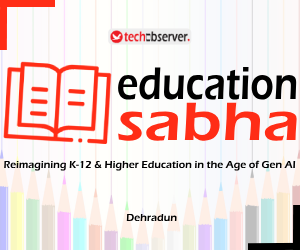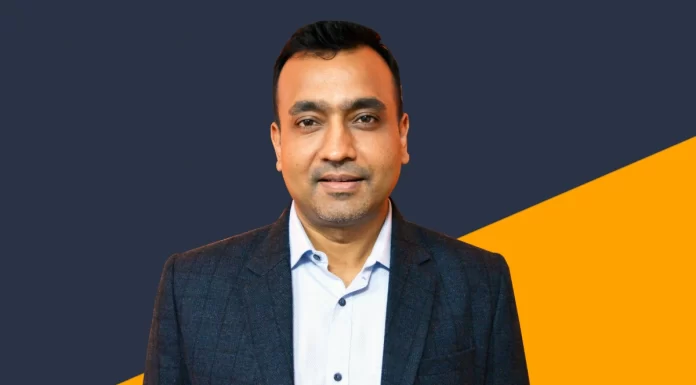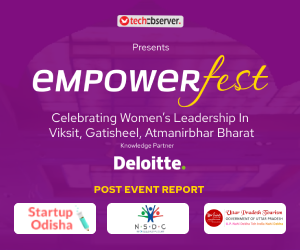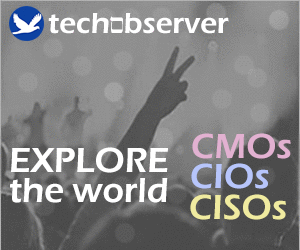About a decade ago, most data came from central systems like ERP and CRM. Now, data is generated at the edge—by customers, in stores, and in hospitals. This shift requires quick, tactical decisions. However, according to a senior industry leader, traditional analytics has been tough to adopt due to its complexity. People had to navigate dashboards, apply filters, and drill down into reports, making it a cumbersome process.
“The way we interact with data is changing, thanks to large language models. Earlier bots were rule-based and limited, but now, AI allows for more natural, conversational interactions. Users can simply ask questions and get meaningful answers without the hassle. This makes it easier to find hidden insights and use data more effectively in everyday decisions,” Chetan Alsisaria, CEO and Co-Founder, Polestar Solutions said in an interview with TechObserver.in.
Edited Excerpts:
With the current AI buzz and platforms like ChatGPT, what impactful trends do you see influencing enterprises in adopting AI solutions?
AI has indeed been around for quite some time, but the advent of generative AI like ChatGPT has brought it into the mainstream. This shift is having far-reaching implications across various sectors, including analytics. One significant trend is the shift towards conversational analytics. Traditionally, consuming analytics required navigating structured dashboards, selecting filters, and drilling down into data, which posed challenges. Now, people can ask for information conversationally and receive meaningful responses that are not hardcoded.
Earlier analytics bots were rule-driven and required extensive training data, limiting their use. Large language models are revolutionising this, making it easier to extract insights from data. For instance, interpreting complex datasets with charts, graphs, or tables will become more intuitive, revealing information that was previously hidden in plain sight.
AI is also transforming industries like Consumer Packaged Goods (CPG), where companies can now understand end consumers directly due to internet and mobile penetration. This generates vast amounts of data, necessitating algorithms for customer segmentation and hyper-personalisation. In manufacturing, smart machines have modernised an industry previously lagging in technology adoption. Similarly, fintech advancements have significantly evolved banking, improving risk assessment and sales forecasting through AI.
How do you address the challenge of varying levels of data understanding among employees in large organisations, especially traditional ones?
While many of our employees have tech backgrounds, mindset issues can still pose challenges. Changing long-standing habits requires a top-down approach. Leadership must drive change by integrating data into their discussions and decisions, setting an example for the entire organisation.
Ease of use is crucial. Cross-functional teams should be involved from the start, and user feedback should shape development. Continuous training and embedding data analytics into learning and development are vital. Recognising and rewarding analytics efforts can also boost adoption. For instance, one client's “analytics of the month” program encouraged insightful data reports, rewarding and recognising employee contributions.
Integrating analytics into everyday applications also helps. We embedded analytics into a sales mobile app, which included incentive-related information, significantly increasing adoption.
What impact do you see edge computing having on data analytics?
Edge computing is transforming data analytics by enabling faster decision-making at the device level. Previously, data was mainly generated by centralised systems like ERP and CRM. Now, the majority is generated at the edge, in retail stores, hospitals, and more. This data needs real-time analysis for tactical decisions. For example, in retail, edge computing allows for real-time data analysis to optimise product placement based on customer footfall.
Transmitting all raw data to a central system is costly and introduces latency. Edge computing reduces latency and costs, making it ideal for applications like machine maintenance. The benefits, such as faster decision-making and cost savings, outweigh the risks of uptime, downtime, and security concerns. Edge computing is quickly becoming essential for efficient tactical decision-making.
What trends do you see in cloud-based self-service analytical services?
Cloud-based self-service analytics has been growing due to its cost-effectiveness and scalability. Initially, high costs limited analytics to top management. Cloud computing has lowered these barriers, allowing organisations to start small and scale up as needed.
This trend combines user-driven analytics with centralised data governance. Users can create insights without waiting for IT, a significant limitation of previous analytics systems. This flexibility, combined with better data governance, leads to higher adoption rates.
How has your year been, and what are your future plans for Polestar Solutions?
We have had a phenomenal year. We have grown from a small office to having a presence in four locations in India and one in the US, with over 600 employees. We work with Fortune 500 companies, large Indian conglomerates, government entities, and unicorns. Our growth is driven by our focus on building a great team, attracting top talent, and ensuring client success, evident from our high repeat business ratio of over 87%.
Looking ahead, we are focusing on three growth levers: geographical expansion, industry-specific solutions, and innovation. We have raised our first round of funding to expand in the US and plan to invest aggressively in that market. We are developing accelerators and solutions for industries like CPG and manufacturing, addressing specific business pain points. We are also investing in next-generation technologies to create cutting-edge solutions, embedding them into our offerings to deliver exponential returns to our clients. These strategies will continue to drive our growth.








